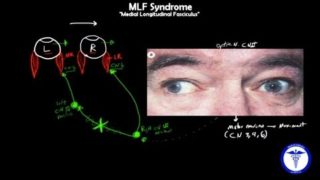Multiple Sclerosis (MS) Clearly Explained
What is Multiple Sclerosis or MS? MADE EASY
This video tutorial is brought to you by: Ali Feili, M.B.A., M.D.
More info on Multiple Sclerosis: http://www.medical-institution.com/multiple-sclerosis-ms-signs-and-symptoms-diagnosis-treatment/
✔ FREE Medical Videos: https://freemedicalvideos.com/
✔ Website: http://www.medical-institution.com/
✔ Facebook: http://www.facebook.com/Medicalinstitution
✔ Twitter: https://twitter.com/USMLE_HighYield
✔ Google Plus: https://plus.google.com/u/0/+Medicalinstitution
✔ Patron: https://www.patreon.com/medicalinstitution
✔ Pinterest: https://www.pinterest.com/medicalinstitut/
✔ Instagram: https://www.instagram.com/Medical_institution_USMLE/
The information in this video is intended for educational purposes only, and should not be interpreted as medical advice. Please consult your physician for advice about changes that may affect your health.
Internuclear Ophthalmoplegia - MLF syndrome: https://www.youtube.com/watch?v=vfer9...
Stem Cell Transplant Study: http://www.sciencedaily.com/releases/...
Multiple Sclerosis Made easy
Multiple Sclerosis explained
What is Multiple Sclerosis?
MS made easy.
MS explained.
What is MS?
Multiple Sclerosis signs and symptoms.
Multiple sclerosis diagnosis.
Multiple Sclerosis treatment.
MS signs and symptoms.
MS diagnosis.
MS treatment.
Multiple Sclerosis (MS) Clearly Explained
Other Videos You Might Like:
Subscribe
Login
10 Comments
Newest





